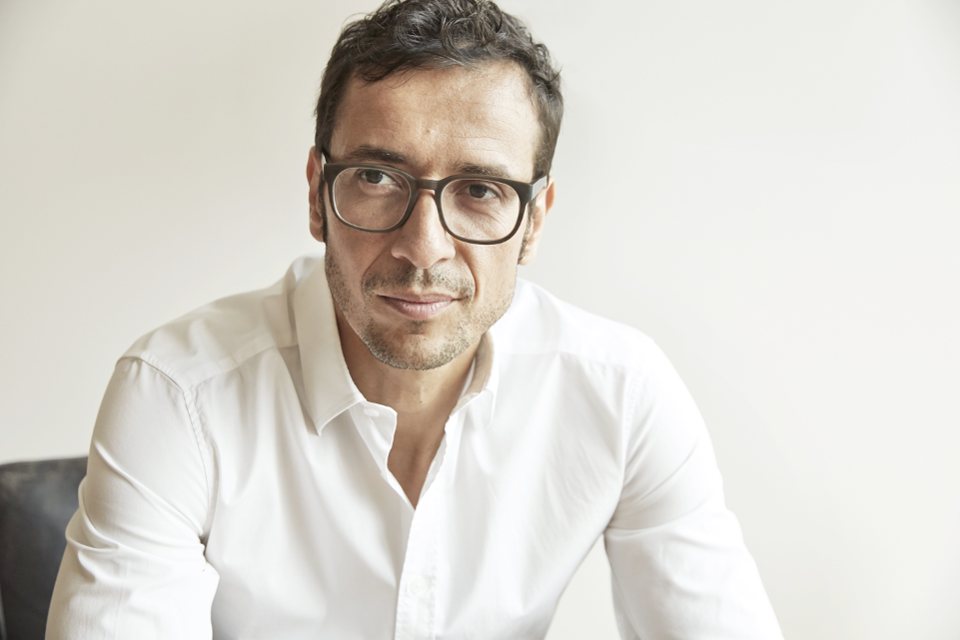Jean-Claude Bastos de Morais, a Swiss-Angolan entrepreneur, is the founder and CEO of Quantum Global Group, an international investment firm with a focus on Africa. The company manages a $400 million healthcare fund which is a long-term direct equity investor into a diversified portfolio of healthcare assets. Quantum Global is currently planning to set up a chain of small primary care clinics made from shipping containers across Africa.
I recently sat down with him to discuss the state of primary healthcare in Africa and what his company is doing to deliver better solutions in this space.

Describe the overall state of healthcare in Sub-Saharan Africa?
Healthcare in most of Sub-Saharan Africa remains one of the worst in the world. Despite decades of foreign assistance, few countries in the region are able to spend the $34–$40 per person per year, which the World Health Organization (WHO) considers to be the minimum necessary to provide a population with basic healthcare.
The grim situation in health is the result of a crisis in healthcare investments in the continent; with only one per cent of the world’s health expenditure being used in sub-Saharan Africa. It is estimated that $25–$30 billion in new investments will be needed in health care assets only, to meet the growing healthcare demands of Sub-Saharan Africa. But which aspects of healthcare should private investors be looking at if they want to make a real impact on healthcare in sub-Saharan Africa in the near-term?
Individuals without access to primary healthcare have little or no chance of early diagnosis and treatment of more complex ailments such as diabetes and cancer. There is the issue of shortages of doctors and nurses in most Sub-Saharan African countries; this problem is even more acute in rural and remote areas. WHO recommends a minimum of two physicians per 10,000 population; 29 of the 46 sub-Saharan countries are below this level.
A massive roll out of “brick and mortar” primary care clinics in an attempt to increase coverage would be challenging from a funding perspective and indeed may not be economically viable, especially in remote areas. The traditional healthcare delivery models involving in-person visits to a primary care health facility, staffed by doctors and nurses are severely constrained in delivering the desired results.
How can a vast rural population in much of the African continent be given access to better healthcare services – what models are there today and what do you see as going to be successful?
It is a known fact that nurses and Community Health Workers (CWHs) are a critical part of healthcare delivery in rural areas. Their role in the Sub-Saharan Africa context is even more vital considering that 63% of total Sub-Saharan Africa population lives in rural areas, with as much as 80% in some countries. Nurses and CWHs have typically been used as frontline personnel on an adhoc basis, for example, to support the fight against specific diseases or drive immunization. In many communities, nurses and CHWs already provide medical services without adequate supervision or training relative to their scope of practice.
Formally integrating them as a part of the healthcare delivery in rural areas with supervision and linkage with trained doctors can result in positive clinical outcomes. For instance, in some provinces in South Africa, nurses are equipped to provide first level antiretroviral therapy (ART) assessment for patients diagnosed with HIV and can provide repeat prescription for adults with uncomplicated HIV – other cases are referred to doctors. This is a system that combines the formalized role of nurses and CHWs with the deployment of a telemedicine platform with links to doctors and pharmacies can indeed prove to be highly effective.
Is there a particular root cause for the failure of addressing the healthcare challenge and ultimately also the lack of healthcare investments across Africa?
In order to make a significant impact and upgrade the Sub-Saharan African primary healthcare picture, a major constraint in the development and deployment of alternative healthcare delivery model needs to be addressed – the lack of policy and market framework in most countries. There is an urgent need for a clear framework for example, for the operation of CHW driven health delivery model, governance of telemedicine and e-pharmacy systems etc.
Stakeholders in the primary healthcare system need to move away from simply appropriating funds and donating aid, to building sustainable infrastructure and systems that can attract investments to ensure needed therapies are available, in even the most remote areas. Everyone should have access to good health, no matter where they live.
In your view, what are some of the innovative ways to effectively deliver healthcare services in the continent?
Mobile or moveable health facilities (“mobile clinics”) are a great way to reach to a population that has no access to basic health services. Such initiatives can also serve as a cost-effective way of delivering primary healthcare services in general. We are already witnessing a rise in the demand for mobile clinics globally. In recent years, a few countries in Sub-Saharan Africa have deployed mobile clinics as part of the primary healthcare system.
In most instances, they are operated as part of the public health infrastructure or social impact projects by not for profits and social organizations. In Kenya and Ghana, the government acquired mobile clinics for rural healthcare delivery. In South Africa and Mozambique, the initiative has largely been driven by NGOs.
I understand that your company has established a dedicated private equity fund catering to the healthcare sector. Tell us more about the fund and the role it intends to play?
My organisation, Quantum Global Group, manages a $400 million healthcare fund which is a long-term direct equity investor into a diversified portfolio of healthcare assets. In Angola for example, Quantum Global’s healthcare fund is planning to set up small primary care clinics made from converted shipping containers. This brings a plethora of advantages around cost, timing and flexibility. In particular, they can be deployed more quickly than building a conventional clinic and they can be moved to a new site if operations at the old site proves unviable or priorities shift.
The container clinics can also double as a hub location for operations of a telemedicine system. An added advantage of mobile clinics is that they can be a source of supply of unadulterated drugs (drugs not spoiled or made weaker by the addition of other substances); to rural communities. The approach being adopted by Quantum Global’s healthcare fund in Angola, will form an economically viable and scalable model which will then be replicated in other parts of Sub-Saharan Africa – all the while considering the particularities of each individual African country.
Finally, what’s your view on the outlook for the healthcare market in the continent.
The outlook for the healthcare market from an investors point of view – both on the healthcare delivery side and in terms of pharmaceutical manufacturing, continues to look promising, primarily due to robust underlying demographic fundamentals, the growing burden of non-communicable diseases as well as increasing government action to support the sector. The role of private investment towards improving healthcare delivery in Sub-Saharan Africa will become increasingly important over the long-term, specifically in primary healthcare delivery models.
A combination of economic growth and growing urban middle class will boost the demand for healthcare services, creating revenue earning opportunities for investors and companies that provide primary and secondary care healthcare services. Therefore, to deliver a marked improvement in healthcare statistics, countries in Sub-Saharan Africa must also prioritise investments into alternative health care delivery systems.



























